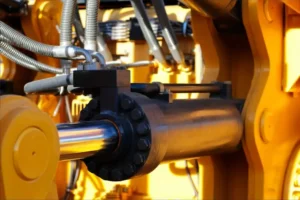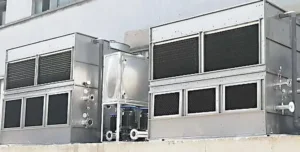Strengthening equipment management in small and medium-sized frequency furnace enterprises and reducing harmonic pollution to the power grid can be addressed through several strategies:

1. Regular BẢO TRÌ and Inspection
- Preventive Maintenance: Implement a routine maintenance schedule to check and replace worn-out components. This can help prevent equipment failure and ensure efficient operation.
- Inspection and Monitoring: Use diagnostic tools to regularly inspect equipment for potential issues like overheating, unusual vibrations, or other signs of wear and tear.
2. Use of High-Quality Components
- Quality Transformers and Capacitors: Invest in high-quality transformers and capacitors that are designed to handle the specific load requirements of the frequency furnace. This can reduce the risk of equipment failure and improve power quality.
- Proper Sizing: Ensure that all components are appropriately sized for the furnace’s power requirements to avoid overloading and inefficiencies.
3. Harmonic Filters
- Active Filters: Install active harmonic filters to dynamically compensate for harmonics generated by the furnace. These filters can adapt to varying harmonic loads and provide real-time correction.
- Passive Filters: Use passive harmonic filters, such as LC filters, to absorb specific harmonic frequencies. They are typically used for lower-order harmonics and can be cost-effective.
4. Power Quality Monitoring
- Harmonic Analyzers: Use harmonic analyzers to monitor the level of harmonic distortion in the power system. This data can help in identifying sources of harmonics and assessing the effectiveness of mitigation measures.
- Regular Reporting: Implement a system for regular reporting on power quality parameters, including Total Harmonic Distortion (THD), to track improvements and identify areas needing attention.
5. Energy Management Systems
- Load Management: Implement an energy management system (EMS) to optimize the operation of the furnace, especially during peak demand periods. This can help in reducing power consumption and minimizing stress on the power grid.
- Automatic Hiệu chỉnh hệ số công suất (APFC): Use APFC panels to maintain a high power factor, which can reduce the load on the power grid and improve overall system efficiency.
6. Employee Training and Awareness
- Technical Training: Provide training for staff on the operation and maintenance of the furnace and associated equipment. This includes understanding the impact of harmonics and the importance of regular maintenance.
- Sự an toàn Đào tạo: Emphasize safety protocols to prevent accidents and ensure the proper handling of electrical equipment.
7. Compliance with Standards and Regulations
- Adherence to Standards: Ensure compliance with national and international standards for power quality and equipment performance, such as IEEE, IEC, and ISO standards.
- Regular Audits: Conduct regular audits to assess compliance with these standards and identify areas for improvement.
8. Use of Advanced Technologies
- Smart Grid Integration: Explore integration with smart grid technologies to enhance communication with the power grid and enable more responsive power management.
- Predictive BẢO TRÌ: Implement predictive maintenance technologies, such as IoT sensors and data analytics, to predict equipment failures before they occur and optimize maintenance schedules.
By implementing these strategies, small and medium-sized frequency furnace enterprises can improve their equipment management practices, reduce harmonic pollution, and enhance the overall efficiency and reliability of their operations.







